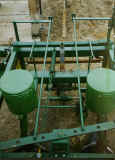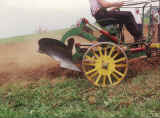 |
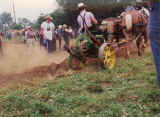 |
 |
 |
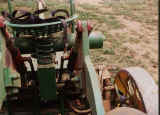 |
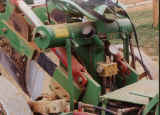 |
White Horse Machine Co.
Ground-drive Hydraulic Reset Plow
Ground-drive Hydraulic Take-off
Developed by Ken Laing of St. Thomas Ontario in 1996.
The progress of this machine was photographed from April to July of 1996. Some of these photos later appeared in a Small Farmer's Journal article featuring the planter. The machine is composed ofDisadvantages are; the toolbar is very heavy, and it must be lifted at the end of each row. In the present arrangement, it has to be lifted by one movement to pull the lever to shoulder height and a second movement to push the lever to its final cleared height. This is very tiring to the operator. Also, since the machine plants on 30-inch centers, the horses must walk on 60-inch centers. Since the machine must be pulled by four horses, the entire hitch is nearly 200 inches wide, pulling an implement which is only 72 inches wide. The lines to the horses' bits pass through the harness in such a way that pulling straight back causes their heads to come slightly together. The wider the hitch is, the more this effect is exaggerated. Thus there is a risk that an incautious or insensitive teamster can cause the horses to step out of their assigned rows, which means they would have to be stopped and reset.
The problems are potentially soluble through some additional engineering to lift the toolbar by a hydraulic or other ground drive mechanism (such as on a plow or dump rake), and through using a double tandem hitch instead of the present 4-abreast hitch.
In this area of Canada, rain often makes it difficult for farmers to get on the field and complete several operations in a timely manner. This implement is an effort to solve that problem, and is appropriate to the conditions for which it was designed.
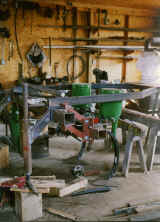 |
 |
 |
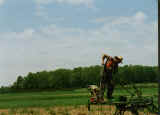 |
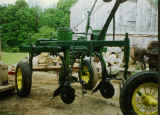 |
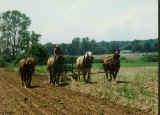 |
